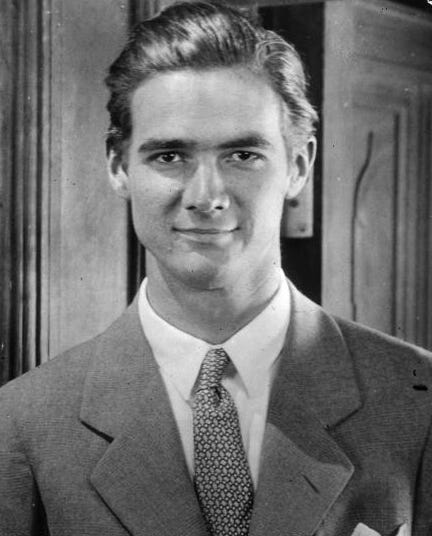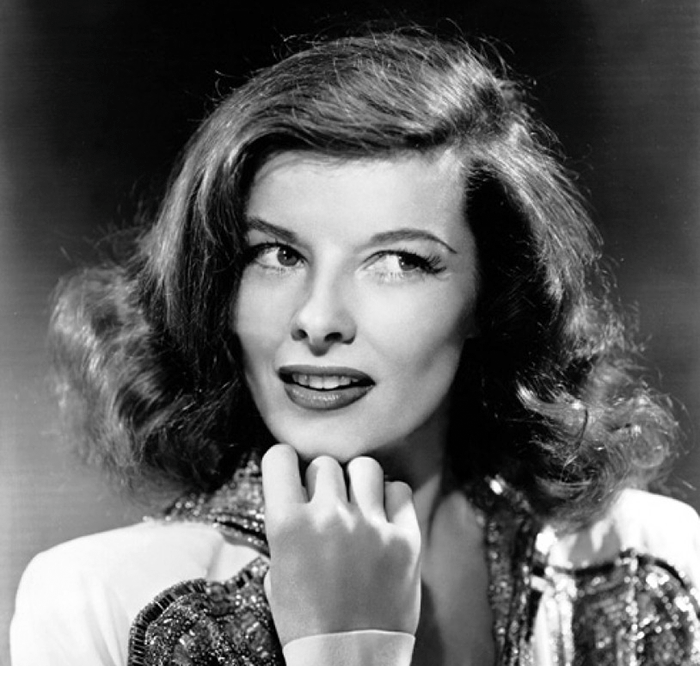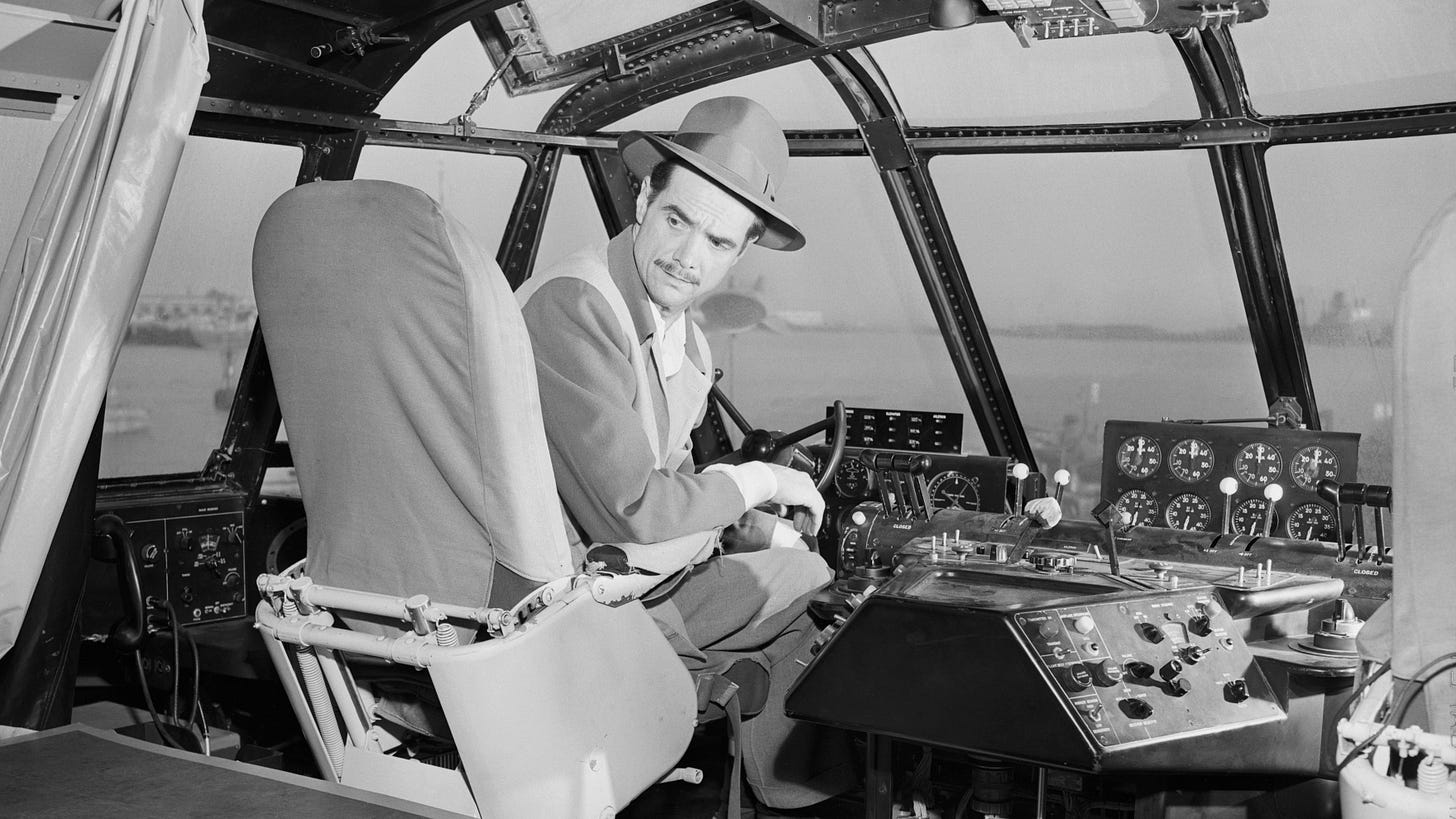Dissecting the Hepburn Family Scene from '04's "The Aviator"
A scene that is brilliant, while slightly out of place, capturing a complex emotional idea
Movie is a visual medium, whereas most of humanity’s experience with storytelling is with print and verbal stories. Print and verbal stories are, primarily, limited to the text. It is very hard and rare for a text to capture anything close to the potentials of a movie.
Movie Directors, then, have this nearly limitless potential to capture a moment. One thing that causes the popular discontent with recent movie offerings, is that they are just plain offerings: a script with a cast who half-heartedly puts out 90 minutes of visual slop.
Bur occasionally, rarely, you find a Director who captures some of the real potential of this visual medium. They put on screen what would be difficult to capture in print or in text.
Great movies have big and complex ideas presented in smart and subtle ways.
They give you something you haven’t seen before. They wrap truths into texts which are transformed into scenes. When it’s well done, it’s magical.
Great movies help amplify great ideas. The greatest Directors can work wonders.
There aren’t many of them these days.
In the list of most people’s favorite Directors, Martin Scorsese is probably on most lists. Known for crime and violence, and the occasionally indulgent culturally Catholic movie, he’s a crowd pleaser.
One of his popular but still somewhat obscure movies, is his biopic about Howard Hughes, 2004’s “The Aviator.”
“The Aviator” tracks Howard Hughes from roughly the years 1927-1947.
If you look at the main segments and eras captured within the movie, they aren’t that interesting at first glance. Here’s a rundown:
1927-1928 - Directing Hell’s Angels
1930s - Dating Katherine Hepburn
1935ish - Acquiring TWA
1937-1943 - Plane testing
1941-1945 - Defense contracting, including the “Spruce Goose”
1947 - Defending himself against claims he’s a ‘war profiteer’
I don’t think anyone would look at this list and assume that this would make for an interesting movie.
Hughes isn’t the leading man, he’s a recluse with severe mental problems. He’s a businessman, but most of the relevant story isn’t him making money, it’s him fighting the government. He’s rich and unapologetically so, making him a little less than sympathetic. Katherine Hepburn, even at her prime, was not an especially attractive woman.
I have mixed feelings about Howard Hughes. On some level, this is a guy who relentlessly fought the government.
Of course I like that.
But then again, he also had a very close relationship with the government. He was a war profiteer. The “Spruce Goose” was a foolish endeavor.
In case you’re not familiar with the story, Hughes' Spruce Goose, officially known as the Hughes H-4 Hercules, was an ambitious but ultimately impractical aircraft designed during World War II as a massive cargo transport. Constructed primarily of birch wood due to wartime restrictions on aluminum, the plane was the largest flying boat ever built, with an unprecedented wingspan of 320 feet. It was intended to carry troops and supplies across the Atlantic to support the war effort, but the project was plagued by delays and was not completed until after the war had ended. On November 2, 1947, Hughes famously piloted the Spruce Goose on its only flight, a short hop over Long Beach Harbor, proving that the aircraft could get off the ground. Despite this, it never entered production, and Hughes kept it stored in a climate-controlled hangar for decades and today is preserved at the Evergreen Aviation & Space Museum in Oregon.
The scene in the movie related to the infamous plane, which is ultimately just a big wooden plane taking off in a harbor, 30 feet off the ground, for a short flight, is so well-done in the movie that it’s worth reposting here as well:
The actual “Spruce Goose” was a boondoggle.
The eight engines were underpowered for what was supposed to be a military transport aircraft. On its sole voyage, it was not loaded down with troops and material. Even its modern defenders will point out that the jet technology needed to make the physics of this monster cargo plane work was right around the corner.
The engines were barely sufficient to lift the plane off the water for its short test flight, but they lacked the sustained thrust needed for a full load and long-range operation.
Here’s a great interior tour of the airplane:
As a water-based plane, it had a high drag-to-lift ratio causing it to burn excess fuel. Meaning that it would never be suitable for long-range operations.
The plane’s solo flight was likely due to ground effect, which is where air pressure builds up beneath a large wing flying close to the ground (or water), temporarily increasing lift and reducing drag. So sustained flight at higher altitudes would have been far more difficult, requiring significantly more power than the aircraft could generate.
This plane was a boondoggle from start to finish.
Hughes was given $22 million (equivalent to over $350 million today), for a plane that only flew, briefly, once, two years after the war it was built for ended.
So the movie is a bit of a Hughes hagiography. It’s highlighting his positives, and it’s downplaying his negatives.
It presents, in that vein, a complicated relationship with actress Katherine Hepburn.
The movie makes it seem as though they were soul mates that never married and connected because of the various faults of their characters. Hughes could not treat Hepburn well, and had a hard time emotionally connecting with her, and Hepburn could not quite fully appreciate Hughes and all of his eccentricities.
I don’t know how accurate that is, but that’s how the movie presents itself.
The eventual destruction of their relationship is being foreshadowed by the family dinner with the Hepburns. This is the life that Katherine wants: busy, messy, loud. The life of an actress.
But it also represents the challenge of the age, politically and philosophically, between individualism and communitarianism. Hughes is an individual loner, seeking to build his fortunes. The Hepburn family, typical left-wing elites, eschew any kind of personal gloating or pride.
Those distinctions and divisions, the inherent traits of their characters, come into conflict in one moment of interpersonal conflict.
I love this scene, and more than a few times in my life, I feel like I have lived this scene.
Here’s the scene:
On the surface, many of the things involved are unrelated to one another. At face value, the various statements are not connected.
But they are bound together by the personalities and philosophies involved.
It’s a brilliant scene, and brilliant writing across the board.
I think if I give you the transcript of the scene you will see it even more in the visual presentation and how the text itself does not capture the moment nearly as well as the acting talent of those on screen:
Howard: What, what was that?
Kate: Oh, he’s a little deaf.
Julian: Pass the goddamn butter, I beg you.
Mother: You read flying magazines?
Julian: Here, take the butter.
Howard: Trade journals. On engineering. Aviation.
Father: We read books.
Kate: Well, Howard has to read the trade pieces, Mom, because he’s designing a new aeroplane.
Guest: Oh, really? Do tell.
Howard: Well, uh… it’s quite exciting, actually. It’s a spy plane for the Air Corps. A twin-engine plane with some… I must admit, some rather unique design features. You see, it has these two booms at the back—
Mother: Luddie built a birdhouse once. You remember that, dear?
[Family laughs]
Luddie: Yes, well, a mere trifle, darling.
Linda: Oh, I remember the painting! It’s called May 18-something.
Guest: Anyway, Goya’s vastly overrated.
Mother: All the Spaniards are.
Kate: Nonsense! Picasso is sacred.
Father: I’m a urologist.
Kate: It was quite aesthetic, really. A sacred monster, that’s what Picasso is.
Father: The birds didn’t care for it much, but the bats do.
Howard: I’ll bet.
Kate: Oh, that’s such bunk!
Mother: Do speak up, dear.
Howard: Nothing, nothing, Mrs. Hepburn. Nothing.
Mother: Then why did you speak? I can’t abide people who speak but have nothing to say.
Luddie: Did you go to mechanic school to learn all this… you know, airplane guff?
Howard: No, no, I didn’t, Luddie. No.
Kate: Well, Howard just flew around the world in three days.
Guest: I think we’ve had enough about airplanes.
Father: And dogs, apparently.
Luddie: Then how’d you make all that money?
Mother: We don’t care about money here, Mr. Hughes.
Howard: Well that’s because you have it.
Mother: Would you repeat that?
Howard: You don’t care about money, because you’ve always had it.
Luddie: Then how did you…
Howard: Excuse me, I’m speaking.
Luddie: Okay.
Howard: Thank you.
Luddie: Alright.
Howard: Some of us choose to, uh, work for a living. Speaking of which, I have more of that ‘airplane guff’ to attend to. Excuse me.
Luddie: Hmm. A rather high-strung chap.
Kate: You’re a fine bunch of bullies, aren’t you?
So Hughes is someone with Obsessive-Compulsive Disorder, who is also a bit of a germophobe. He was hard of hearing, and an Engineer.
He was an odd fit for the group. The Hepburn family were about competition, talking, arguing, sports, family life. All of these things were foreign to Hughes.
He is the individualist outsider, they are the communitarian social butterflies.
The scene represents the resolve and determination of the individual against the group and the noise that all groups generate, the distractions that they constantly present.
Just as Hughes had to choose between staying at the table or working on ‘airplane guff’ he also had to choose between Hepburn and choosing his own isolated lonely path trying to be a scion of business.
The two were mutually-exclusive, he could not have it all.
But on a very basic level, this scene represents, to me, the trend of matriarchal bullies who often lambaste and pressure others in their social circles. Everyone has an experience with bullies, both as one and on the receiving end I suppose. But few have the courage and temerity to challenge that bully, and to stop the conversation with such a direct and honest truth. It’s the literal demonstration of ‘speaking truth to power’ and few have the courage to speak the truth.
The truth is uncomfortable. It causes ‘pregnant pauses’ and it upsets relations. A bluntly spoken truth, even if respectfully done, can create a situation where one has to leave the table.
Our society runs on sophistry and dissembling. But it needs more truth-tellers. Innovations and entrepreneurs are good for the bottom-line, but the unabashed truth-tellers are like mini-prophets of the obvious.
I can’t think of another scene quite like this one.








